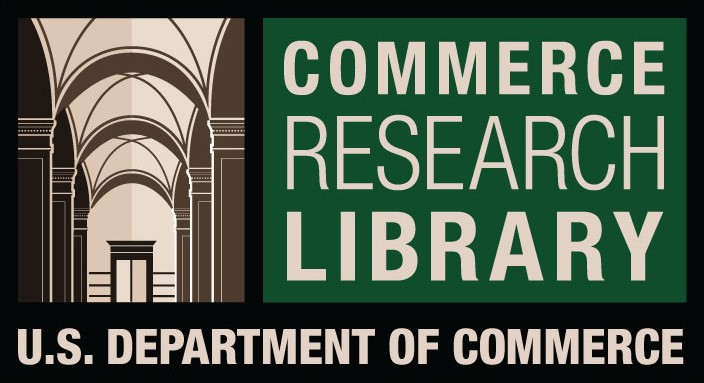Modern Education and Change in Mindset and Behavior of Saminist (Historical Perspectives of Saminist Community in Jepang Hamlet, Margomulyo Village, Margomulyo District, Bojonegoro Regency)
DOI:
https://doi.org/10.61841/sehsk860Keywords:
saminism, poverty, education, social change, traditionAbstract
Saminist is a group of people who are traditionally upholding the values of ancestral teachings, but in its development Saminist young generation is willing to receive formal education that brings new values and enhanching the Wellfare.. The purpose of this study is to analyze the poverty, mind and behavior of Saminist teenagers in formal schools. The research employed qualitative method, with a historical perspective. The location of this research was Jepang Hamlet, Margomulyo Village, Margomulyo District, Bojonegoro Regency and also Junior High School Margomulyo. The informants of this study are 9 saminist adolescents attending Junior High School Margomulyo, 6 families of Sedulur Sikep adolscent, 6 saminist schoolmates, 2 teachers and Sedulur Sikep ancestor. The techniques of data collection are in-depth interviews, observation and documentation. The results showed that acculturation of Sedulur Sikep adolescents’ mindset in formal school include (1) acceptance of competition; (2) acceptance of sanction in the school. In addition, the behaviour acculturation of saminist adolescent in formal school include (1) using Javanese Ngoko and Indonesian language; (2) using transportation and communication technology; (3) participate in Islamic learning. Saminist have changed in thinking and behavior, but they don’t leave the beliefs and values of the Sedulur Sikep teaching that have been planted for generations.
Downloads
References
1. Bahrudin, B., Masrukhi, M., & Atmaja, H. (2017). Pergeseran budaya lokal remaja suku tengger di desa argosari kecamatan senduro kabupaten lumajang. Journal of Educational Social Studies, 6(1), 20-28. Retrieved from https://journal.unnes.ac.id/sju/index.php/jess/article/view/16251
2. Berry, John W. & Safdar, Saba (2007). Psychology of diversity: managing of diversity in plural societies (19-36). In A. Chybicka & M. Kazmierczak (Eds.). Appreciating diversity: Cultural and gender issues. Cracow, Poland: Impuls.
3. Hardati P, Setyowati D. L., & Wilonoyudho, S. (2015). Pendidikan konservasi. Semarang: Magnum Pustaka Utama.
4. Darmastuti, R. & Mustika, K. P. (2010). Two ways communication: sebuah model pembelajaran dalam komunitas samin di sukolilo pati. Jurnal Ilmu Komunikasi, 8(2), 204-216. Retrieved from https://www.researchgate.net/publication/265440170
5. Lestari, I. P. (2013). Interaksi sosial komunitas samin dengan masyarakat sekitar. Jurnal Komunitas, 5(1), 74-86.http://journal.unnes.ac.id/nju/index.php/komunitas
6. Maharromiyati, M., & Suyahmo, S. (2017). Pewarisan nilai falsafah budaya lokal gusjigang sebagai modal sosial di pondok pesantren entrepreneur al mawaddah kudus. Journal of Educational Social Studies, 5(2), 163-172.
7. Retrieved from https://journal.unnes.ac.id/sju/index.php/jess/article/view/14082
8. Mihda, N., & Sulistyo, H. (2015). Pendidikan formal dalam perspektif sedulur sikep (studi kasus pada sedulur sikep desa klopoduwur kabupaten blora. Jurnal Solidarity, 4(2). Retrieved from https://journal.unnes.ac.id/sju/index.php/solidarity/article/view/7266
9. Mujib, F. (2004). Islam di masyarakat samin: kajian atas pemahaman masyarakat samin terhadap ajaran agama islam di dusun jepang kabupaten bojonegoro. Thesis. Bandung: Universitas Padjadjaran.
10. Munib, A. (2011). Pengantar ilmu pendidikan. Semarang: UPT Unnes Press.
11. Natakusuma, A., Suroso., & Hardati, P. (2017). Pengaruh Cara Belajar terhadap Hasil Belajar siswa pada Mata Pelajaran Geografi di SMA Negeri 2 Pekalongan. Jurnal Edu Geography, 5(3), 124-133. Retrieved from http://journal.unnes.ac.id/sju/index.php/edugeo
12. Prasetyo, J., Atmaja, H. T., & Handoyo, E. (2019). Change of adolescent behavior by information technology in pekuwon village juwana district, pati. Journal of Educational Social Studies, 8(1), 1-9. Retrieved from
13. https://journal.unnes.ac.id/sju/index.php/jess/article/view/28182
14. Sari, G., & Subandi (2015). Akulturasi psikologis para selfinitiated expatriate. Gajah Mada Journal of Psychology, 1(1), 13-29.
15. Setyaningrum, D., Pudji Astuti, T., & Alimi, M. (2017). Pergeseran nilai masyarakat samin (sedulur sikep) dukuh bombong. Journal of Educational Social Studies, 6(1), 29-36. Retrieved from
16. https://journal.unnes.ac.id/sju/index.php/jess/article/view/16252
17. Sunarjan, Y. Y. F. R. & Atmaja, H. T., & Romadi. (2017). The survival strategy: urban poor community to live in the brintik hill graveyard, semarang, indonesia. International Journal of Economic Research, 14(6), 147-157. Retrieved from
18. https://www.researchgate.net/publication/317745859_The_survival_strategy_Urban_poor_community_t o_live_in_the_Brintik_Hill_Graveyard_Semarang_Indonesia
19. Sunarjan, Y. Y. F. R. (2018). Adaptive capacity of coupled ecosystem – social system in the community who live in the graviar: a case study the population in the areas of brintik hill graveyard communities in semarang, indonesia. International Conference on Science and Education and Technolog (ISET), 247, 517-
521. Retrieved from
20. https://www.atlantis-press.com/proceedings/iset-18/55910689
21. Widyatwati, K. (2017). Pengaruh masuknya budaya populer terhadap eksistensi ajaran sedulur sikep pada masyarakat samin. Jurnal Ilmu Budaya, 12(1), 137-146. Retrieved from
22. https://ejournal.undip.ac.id/index.php/nusa/article/view/15644
Downloads
Published
Issue
Section
License

This work is licensed under a Creative Commons Attribution 4.0 International License.
You are free to:
- Share — copy and redistribute the material in any medium or format for any purpose, even commercially.
- Adapt — remix, transform, and build upon the material for any purpose, even commercially.
- The licensor cannot revoke these freedoms as long as you follow the license terms.
Under the following terms:
- Attribution — You must give appropriate credit , provide a link to the license, and indicate if changes were made . You may do so in any reasonable manner, but not in any way that suggests the licensor endorses you or your use.
- No additional restrictions — You may not apply legal terms or technological measures that legally restrict others from doing anything the license permits.
Notices:
You do not have to comply with the license for elements of the material in the public domain or where your use is permitted by an applicable exception or limitation .
No warranties are given. The license may not give you all of the permissions necessary for your intended use. For example, other rights such as publicity, privacy, or moral rights may limit how you use the material.









